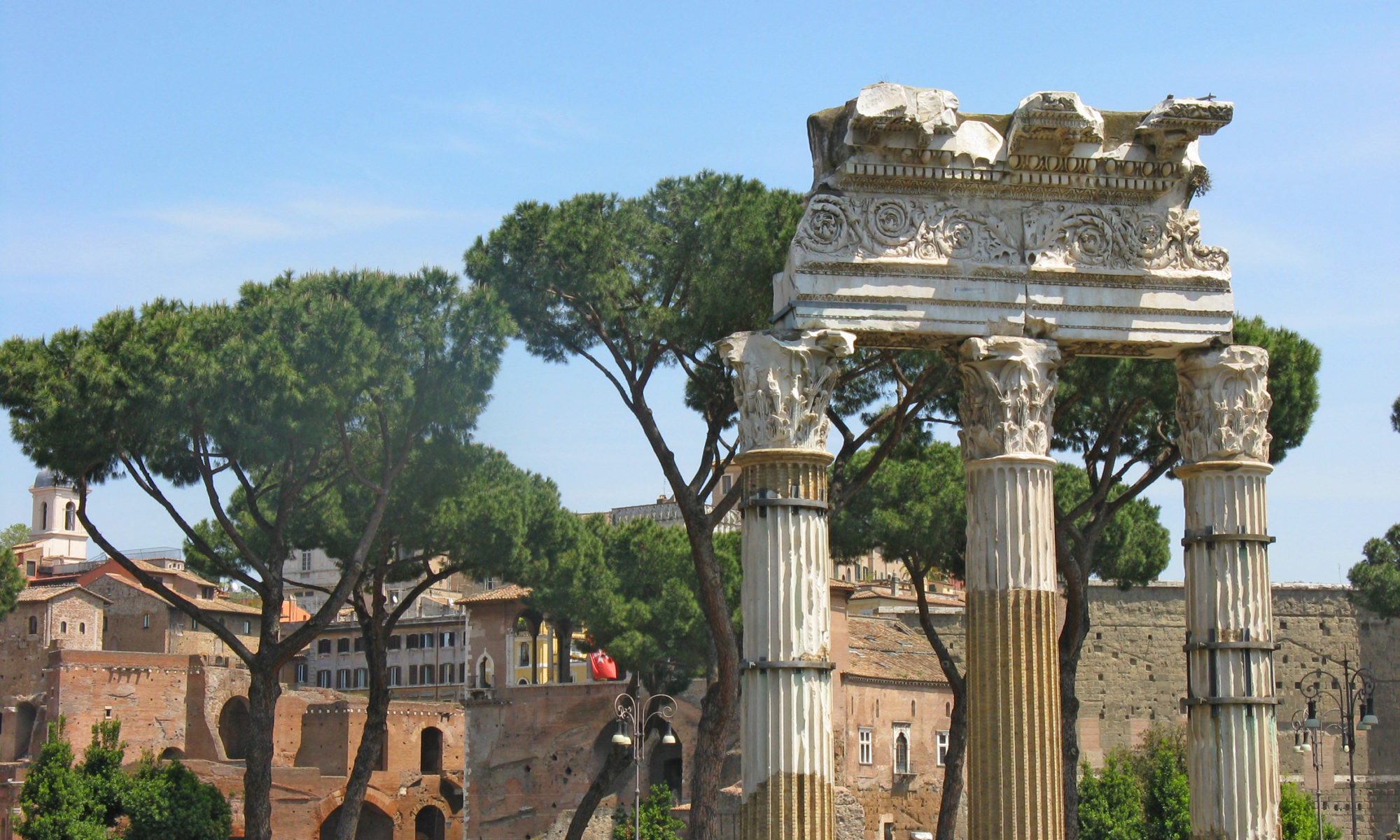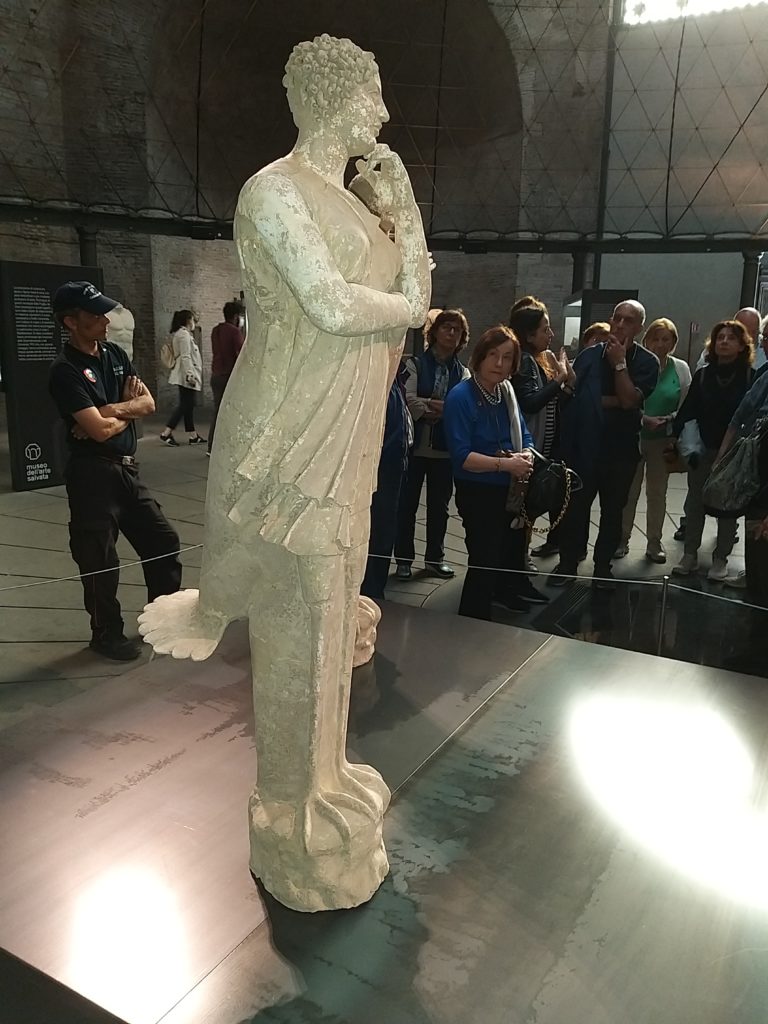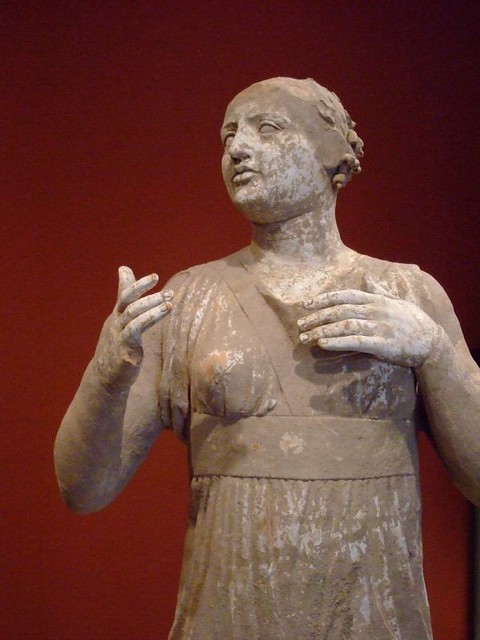This remarkable exhibition of the famous sculptural group depicting Orpheus and the Sirens is currently being held until October 18th at the newly created Museum of Rescued Art. The statues will then be returned to Taranto, where they were first discovered.
The three figures, originally in vivid polychrome terracotta, date back to the latter half of 4 BC, during the colonisation of Magna Graecia. Over the centuries the paint has faded to a subtle shade of warm rosy beige. The craftsmanship is astonishing: each sculpture is marvellously and realistically carved with a refinement and expressivity usually associated with marble. They are thought to be part of a funerary monument in which the statue of Orpheus probably represented the owner of the tomb.
In Greek mythology a Siren is a creature that is half woman and half a kind of weird wader bird with claws who lures sailors to their death by the irresistible power of her singing. Sirens also accompany the souls of the dead to the underworld and comfort them with their soothing melodies. The idea of the mermaid, half fish and half woman, took shape centuries later in the medieval imagination and may be the result of a mistranslation.
The scene portrayed in the group is from the tale of Jason and the Argonauts, who were searching for the Golden Fleece. On the ship with them is Orpheus, a sort of demigod, and a renowned poet and musician. Whenever he plays his lyre, the sound is so exquisite that the birds fly to him and form a halo over his head. The divine strains entrance the sailors and disempower the Sirens, who are so distressed that they commit suicide by flinging themselves into the sea.
Later, Odysseus sails by. He is an intellectual with an insatiable thirst for knowledge and experience (rather too much, according to Dante, who puts him amongst the evil tricksters in the eighth circle of Hell) and is determined to hear the seductive songs. He makes the sailors plug their ears with beeswax, so that they cannot be bewitched by the Sirens; and he has himself bound to the mast to prevent the ship from veering off course and dragging him and the crew down to the underworld. Instead of being repelled by the Sirens and their ugly claws, Odysseus sees only the dazzling beauty of Helen of Troy in their faces.
In line with Pythagorean philosophy, Orpheus and the power of his music symbolise harmony over chaos.
It was the admirable work of investigation by the Carabinieri that led to discovery of the stolen statues, which had travelled from Italy to Switzerland and finally to the Getty Museum. They were taken back to Taranto in the conviction that art should be returned to its origins.
Others argue that great works of art such as this, and the Riaci Bronzes, for example, belong to humankind and should be kept in prestigious, accessible locations to enable as many people as possible to enjoy them.
Note: Tickets for the Museo di Arte Salvata must be bought at the ticket office at 78, Viale Enrico de Nicola, opposite Termini rail station and not far from Piazza Repubblica with its beautiful fountain. The new museum is in the Aula Ottagonale, round the corner from the Terme Diocleziane. Turn right at the gate as you leave number 78, go down the road, then turn right again at the corner. Keep following the church on your right and go over the small pedestrian crossing. The Aula Ottagonale is right in front of you. Feltrinelli is on your left.
Written by association member Julie Dixon





